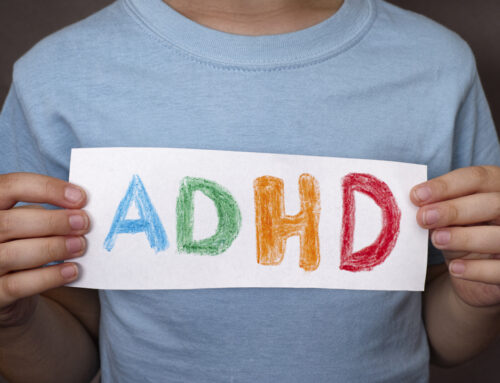LiveScience
August 2014
Anorexia Nervosa involves an extreme obsession with limiting food intake and weight that can end up taking over a person’s life. It is defined as a perceived intense need to drastically limit food intake to produce weight loss.
Anorexia is often thought to affect mostly women. “There is evidence that this is the case, but also conflicting information that boys are equally anorexic but it goes unnoticed and underreported,” said Jeanette Raymond, a licensed psychologist. Anorexia affects about 6 percent of the U.S. population, according to the National Institute of Mental Health, and 5 to 10 percent of people diagnosed with anorexia are male, according to the University of Pittsburgh.
Anorexia is not really about food, according to the Mayo Clinic. People with anorexia are looking for a way to cope with emotional problems, so they try to find something in their life they can control. Food is something that is a constant in a person’s life, so it can be controlled.
Causes
As with many mental-health conditions, the exact causes of anorexia are difficult to pinpoint. Scientific research has helped to narrow down the field of likely causes, such as metabolism, psychological issues and genetics.
“There are clear genetic risk factors for eating disorders,” said Dr. James Greenblatt, chief medical officer at Walden Behavioral Care in Waltham, Massachusetts. “As the increase of genetic vulnerability becomes more evident, genetic researchers around the world are looking to identify specific genetic markers.”
“Family studies have consistently demonstrated that anorexia nervosa runs in families,” Cynthia Bulik wrote in her study, “The Genetics of Anorexia Nervosa,” published in 2007 in the journal Annual Review of Nutrition.
Dr. Walter Kaye of the University of California, San Diego, one of the country’s top eating-disorder researchers, thinks too much blame has been placed on thin fashion models and other media images.
“People have long been blaming families and the media, but eating disorders are biological illnesses, and better treatments will come from more biologically based approaches,” Kaye told Scientific American Mind magazine in June 2008.
Evidence suggests that anorexia may be caused (or at least heavily influenced) by genetics, according to Price Foundation Candidate Gene Project. If true, this may mean that people with the disease could be treated using information discovered in their genes.
Clinicians have found patterns in psychological issues with patients who have eating disorders, according to the National Association of Anorexia Nervosa and Associated Disorders (ANAD). These signs include perfectionism, a need to be liked, a need for attention, a lack of self-esteem and high family expectations.
Factors involving the family that may trigger anorexia, according to Raymond, include the following:
- Overpowering mothers
- Mothers who need their daughters to take care of their emotional needs
- Separation anxiety
- Lack of parental attunement during a phase of development when appearance is important to the child
- Lack of connection with the father at that same crucial stage of development
Signs of Anorexia
- There are two types of anorexia: the restricting type and the binge-eating/purging type, according to the University of Pittsburgh. The most obvious sign of anorexia is not eating, or restricting the amount of food one eats. People with anorexia may avoid meals or may refuse to eat around other people. They may lie about how much they have eaten, withdraw from family or friends and stay home instead of going to social events. They often become moody, depressed, obsessive about their weight and disinterested in the things they once enjoyed.
- There can be other, sneakier ways a person with anorexia can control calorie intake. For example, some will exercise excessively to burn calories, according to the National Institutes of Health. They may cut portions into tiny pieces and move them around on their plate, contemplating every bite. They may go to the bathroom immediately following meals.
- Binge eating and purging are behaviors usually associated with bulimia — another eating disorder — but they can also be symptoms of anorexia. Some people with anorexia may eat massive amounts of food in a short amount of time. Afterward, to get rid of the food, the person may purge by using laxatives, diuretics or enemas, or by vomiting, according to the National Association for Anorexia and Associated Disorders (ANAD).
Complications of Anorexia
- Because food is fuel for the body, restricting food intake can cause drastic changes. Major weight loss is the most noticeable change, but inside, the body deteriorates quite quickly. Malnutrition leads to heart problems, constipation, low blood pressure, osteoporosis, swelling in the arms and legs, abnormal blood counts, loss of menstruation, dehydration and insomnia, according to the Mayo Clinic.
- While someone suffering from anorexia may say they are trying to look better, the disease will often cause a person’s looks to deteriorate. Hair will turn brittle or may even fall out, fingers turn blue, skin becomes dry and a soft layer of hair will grow all over the skin. Fatigue from anorexia can also leave the person pale, with large circles under the eyes.
Anorexia vs. Bulimia
- While anorexia and bulimia are both eating disorders, and some symptoms overlap, they are not interchangeable. Anorexia mostly involves not eating, or limiting food intake for long periods of time, resulting in weight loss beyond what is considered healthy (15 percent or more below the normal weight for the person’s age and height, according to NIH). On the other hand, people with bulimia tend to maintain a normal body weight but control their food intake in a cycle of binging and purging.
- A person can suffer from both disorders at the same time or separately throughout their lives. About 40 percent of bulimia patients often have first had a diagnosis of anorexia, according to the University of Pittsburgh.
Anorexia Treatment
- Only one in 10 men and women with eating disorders receive treatment, according to ANAD. Eating disorders kill more people than any other mental illness, according to the American Journal of Psychiatry.
- Because anorexia can cause so many problems in the body, the first step in recovery is to treat the symptoms. For example, first steps can include getting the person hydrated and on medication that can help with heart arrhythmias caused by the lack of nourishment.
- Once the symptoms have been addressed, action will be taken to help the person gain weight while addressing the psychological issues underlying the disease. Therapy, antidepressants or other psychiatric medications and hospitalization are all possible treatments for anorexia.
- “The duration and severity of anorexia determines the treatment options,” Raymond said. The least-severe cases respond to cognitive behavioral therapy, a type of “talk therapy” that enables patients to develop healthy boundaries and a sense of control outside of refusing food. Group therapy and family therapy are also helpful. Because mother-daughter issues are often a trigger for anorexia, therapy often entails treatment to make it safe for the girl to separate and make relationships outside the family, she said.
- Raymond also noted that antidepressants might have only short-term success if underlying psychiatric issues are not addressed. Often, the anorexia will persist and become more severe, Raymond said.
- Additional treatments for anorexia do not seem to be on the horizon, experts say. “Although there are more research studies on eating disorders, there are currently no new clinical treatments available. The new research demonstrates abnormalities in brain structure and neurochemical functions among individuals with eating disorders. However, the research has not been translated into any new clinical treatments yet,” Greenblatt said.






